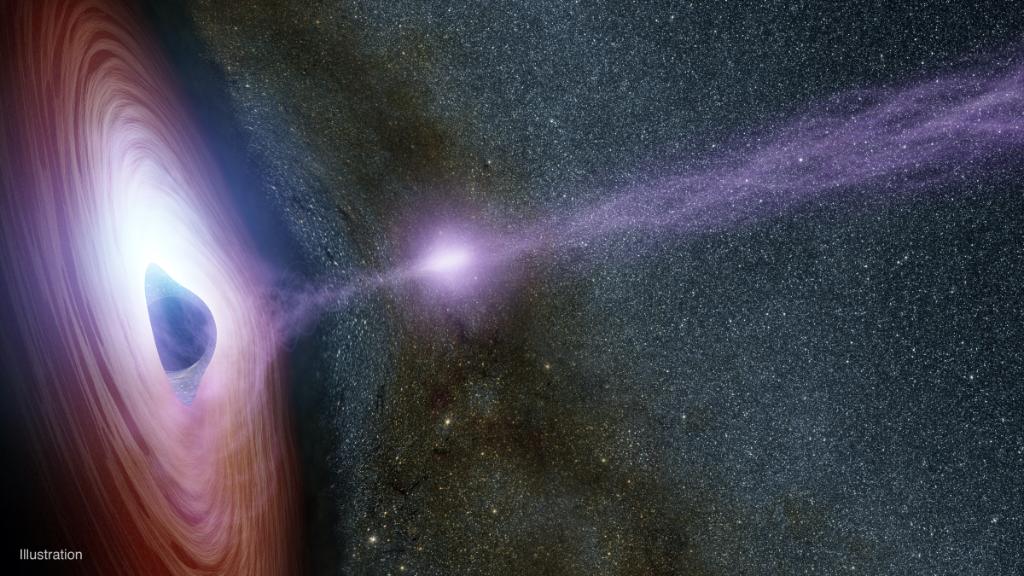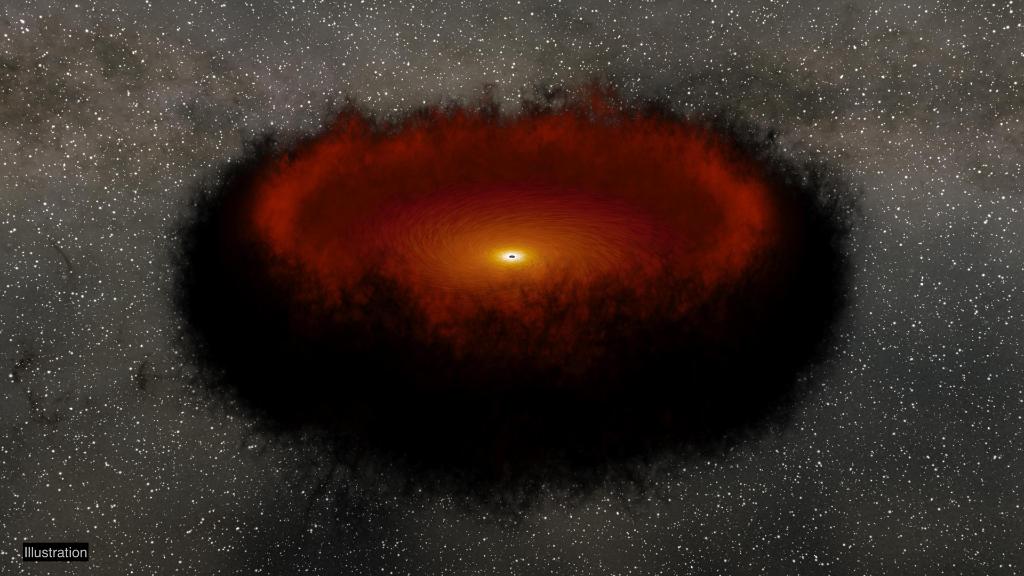While black holes don’t emit light, they’re not necessarily invisible. Swirling gas, energetic jets, and even ripples in space-time can give them away.
Follow this thread to learn how different observatories help us learn about black holes! #BlackHoleWeek https://abs.twimg.com/emoji/v2/... draggable="false" alt="⚫" title="Schwarzer Kreis" aria-label="Emoji: Schwarzer Kreis">
https://abs.twimg.com/emoji/v2/... draggable="false" alt="⚫" title="Schwarzer Kreis" aria-label="Emoji: Schwarzer Kreis">
Follow this thread to learn how different observatories help us learn about black holes! #BlackHoleWeek
https://twitter.com/NASA_LSP/status/1381973483404546058">https://twitter.com/NASA_LSP/...
https://twitter.com/AthenaXobs/status/1381563206158712839">https://twitter.com/AthenaXob...
https://twitter.com/esascience/status/1381933090956775425">https://twitter.com/esascienc...
https://twitter.com/SpaceTelescope/status/1381980528073658375">https://twitter.com/SpaceTele...
https://twitter.com/NASAHubble/status/1381995169856299016">https://twitter.com/NASAHubbl...
Missions like NuSTAR, NICER and Swift help us study material swirling around black holes, which heats up to millions of degrees and glows in X-ray light. We can see how black holes interact with stuff around them — and sometimes we even catch them having a snack. #BlackHoleWeek https://abs.twimg.com/emoji/v2/... draggable="false" alt="⚫" title="Schwarzer Kreis" aria-label="Emoji: Schwarzer Kreis">
https://abs.twimg.com/emoji/v2/... draggable="false" alt="⚫" title="Schwarzer Kreis" aria-label="Emoji: Schwarzer Kreis">
https://twitter.com/NSF/status/1381990486173442048">https://twitter.com/NSF/statu...
https://twitter.com/ESA_XMM/status/1381990236918546433">https://twitter.com/ESA_XMM/s...
Bursts of gamma-rays can announce the birth of some black holes. Our Fermi and Swift observatories keep a continuous eye out for such bursts that signal either the collapse of a large star or the merger of two neutron stars. Learn more: https://tmblr.co/Zz_Uqj2aNmOwb ">https://tmblr.co/Zz_Uqj2aN... #BlackHoleWeek https://abs.twimg.com/emoji/v2/... draggable="false" alt="⚫" title="Schwarzer Kreis" aria-label="Emoji: Schwarzer Kreis">
https://abs.twimg.com/emoji/v2/... draggable="false" alt="⚫" title="Schwarzer Kreis" aria-label="Emoji: Schwarzer Kreis">
https://twitter.com/chandraxray/status/1381996732939071488">https://twitter.com/chandraxr...
Observatories like Spitzer and WISE have helped us learn about dusty rings that surround black holes. Activity near the black hole can heat up this dust, causing it to glow in infrared light. #BlackHoleWeek https://abs.twimg.com/emoji/v2/... draggable="false" alt="⚫" title="Schwarzer Kreis" aria-label="Emoji: Schwarzer Kreis">
https://abs.twimg.com/emoji/v2/... draggable="false" alt="⚫" title="Schwarzer Kreis" aria-label="Emoji: Schwarzer Kreis">
https://twitter.com/LIGO/status/1382000633612472326">https://twitter.com/LIGO/stat...
https://twitter.com/NASASun/status/1382012190094413830">https://twitter.com/NASASun/s...
https://twitter.com/NASASolarSystem/status/1382028538065260544">https://twitter.com/NASASolar...
https://twitter.com/ISS_Research/status/1382038548094844934">https://twitter.com/ISS_Resea...
https://twitter.com/NASAWebb/status/1382053774588534784">https://twitter.com/NASAWebb/...
https://twitter.com/NASAEarth/status/1382070112870674438">https://twitter.com/NASAEarth...

 Read on Twitter
Read on Twitter " title="Missions like NuSTAR, NICER and Swift help us study material swirling around black holes, which heats up to millions of degrees and glows in X-ray light. We can see how black holes interact with stuff around them — and sometimes we even catch them having a snack. #BlackHoleWeekhttps://abs.twimg.com/emoji/v2/... draggable="false" alt="⚫" title="Schwarzer Kreis" aria-label="Emoji: Schwarzer Kreis">" class="img-responsive" style="max-width:100%;"/>
" title="Missions like NuSTAR, NICER and Swift help us study material swirling around black holes, which heats up to millions of degrees and glows in X-ray light. We can see how black holes interact with stuff around them — and sometimes we even catch them having a snack. #BlackHoleWeekhttps://abs.twimg.com/emoji/v2/... draggable="false" alt="⚫" title="Schwarzer Kreis" aria-label="Emoji: Schwarzer Kreis">" class="img-responsive" style="max-width:100%;"/>
 " title="Observatories like Spitzer and WISE have helped us learn about dusty rings that surround black holes. Activity near the black hole can heat up this dust, causing it to glow in infrared light. #BlackHoleWeekhttps://abs.twimg.com/emoji/v2/... draggable="false" alt="⚫" title="Schwarzer Kreis" aria-label="Emoji: Schwarzer Kreis">" class="img-responsive" style="max-width:100%;"/>
" title="Observatories like Spitzer and WISE have helped us learn about dusty rings that surround black holes. Activity near the black hole can heat up this dust, causing it to glow in infrared light. #BlackHoleWeekhttps://abs.twimg.com/emoji/v2/... draggable="false" alt="⚫" title="Schwarzer Kreis" aria-label="Emoji: Schwarzer Kreis">" class="img-responsive" style="max-width:100%;"/>


